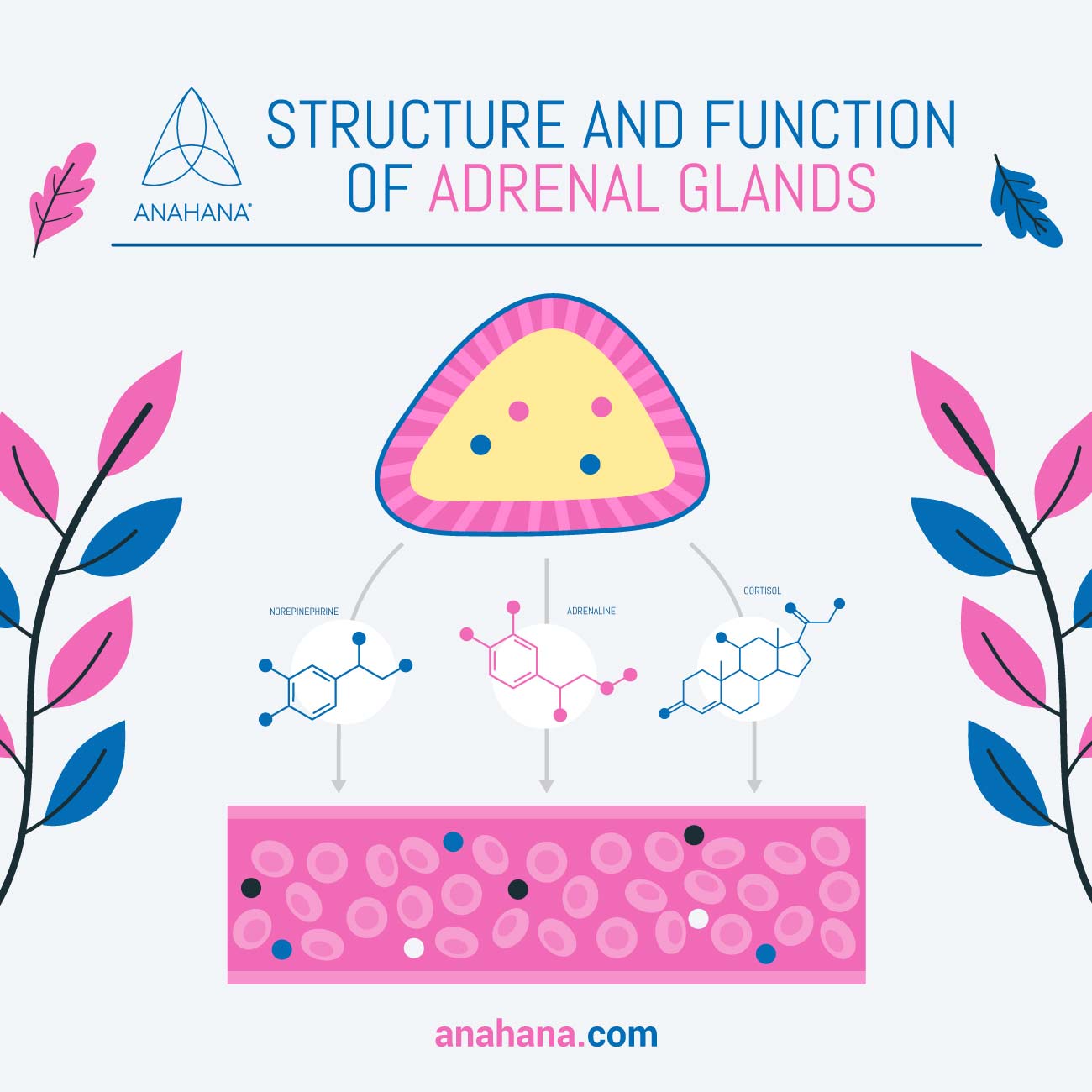
Table of Contents
Adrenaline, also known as epinephrine, is a hormone and neurotransmitter released by the adrenal glands in response to stress or danger. Adrenaline is part of the "fight or flight" response.
Key Takeaways
- Definition: Adrenaline, an adrenal hormone, is crucial for the body's fight-or-flight response and is produced by nerve endings and the adrenal glands.
- Function: It raises heart rate, blood flow, and energy levels, especially during stress or panic attacks.
- Effects of Imbalance: Too little adrenaline can lead to low blood pressure, while excessive release is linked to post-traumatic stress disorder.
- Health Impacts: Chronic stress-related adrenaline release can contribute to anxiety and hypertension.
- Medical Use: Administered in severe allergic reactions and low blood pressure emergencies.
- Nervous System Role: Adrenaline is a key player in the nervous system's response to stress.
It triggers physiological changes that help prepare the body for action, including increased heart rate and blood pressure, dilated air passages, and increased blood glucose levels to provide quick energy.
The adrenal gland also produces other hormones, including cortisol and sex hormones, which regulate metabolism, immune function, and sexual characteristics.
What is Adrenaline?
Adrenaline, or epinephrine, is a hormone and neurotransmitter that helps the body respond to stress or danger via the “fight or flight” response. When the body perceives a threat or danger, adrenaline is released by the adrenal glands, triggering physiological changes to prepare the body for action.
Structure and Function of the Adrenal Glands
The adrenal glands are typically about 3 to 5 centimeters long and weigh 4 to 5 grams each. The glands are located just above the kidneys, with the right adrenal gland sitting slightly higher than the left.
Each adrenal gland consists of two distinct regions, the adrenal cortex, and the adrenal medulla.
The adrenal medulla is the innermost part of the gland and accounts for approximately 20% of its total mass. It produces and secretes hormones called catecholamines, including adrenaline and noradrenaline.
These hormones are involved in the body's fight or flight response to stress, helping to increase heart rate, blood pressure, and respiration rates in response to a perceived threat.
The adrenal cortex accounts for around 80% of the gland's total mass and has three layers, each producing different hormones.
The outermost layer of the adrenal cortex is responsible for producing mineralocorticoids, such as aldosterone.
These hormones help regulate the balance of electrolytes, such as sodium and potassium, in the body.
Aldosterone is specifically involved in regulating the concentration of sodium and potassium in the blood and maintaining blood pressure. This hormone works by increasing sodium reabsorption in the kidneys while increasing potassium excretion.
The middle layer of the adrenal cortex produces glucocorticoids, such as cortisol or stress hormone. These hormones are crucial in regulating metabolism and immune function in the body.
Cortisol helps to regulate blood sugar levels, suppress inflammation, and control the body's response to stress. This hormone also plays a role in breaking fats and proteins and releasing energy from stored glycogen.
Additionally, cortisol can act as an immunosuppressant, which can help to prevent the body from mounting an excessive immune response.
The innermost layer of the adrenal cortex, also known as the zona reticularis, produces sex hormones, such as testosterone and estrogen. These hormones are involved in developing and maintaining sexual characteristics in both males and females.
Testosterone is the primary male sex hormone responsible for developing male reproductive organs and secondary sex characteristics, such as increased muscle mass and facial hair growth.
On the other hand, estrogen is the primary female sex hormone responsible for developing female reproductive organs and secondary sex characteristics, such as breast development and wider hips.
The production of sex hormones in the adrenal gland is relatively small compared to the production in the testes and ovaries. However, they still play an essential role in maintaining overall hormonal balance.
Production and Release of Adrenaline
Adrenaline Synthesis
Adrenaline synthesis begins with converting the amino acid tyrosine into dopamine by the enzyme tyrosine hydroxylase. Dopamine is then converted to norepinephrine by the enzyme dopamine beta-hydroxylase. Finally, norepinephrine is converted to adrenaline by the enzyme phenylethanolamine N-methyltransferase.
Adrenaline is then stored in the chromaffin cells of the adrenal medulla until it is released into the bloodstream.
The trigger for Adrenaline Release
The adrenaline release triggers the sympathetic nervous system activation, which occurs in response to stress or danger. When the body perceives a threat, the hypothalamus releases a corticotrophin-releasing hormone.
This hormone then signals the pituitary gland to release adrenocorticotropic hormone, which triggers the release of adrenaline and cortisol from the adrenal glands into the bloodstream.
Adrenaline then binds to adrenergic receptors on various organs, including the heart, lungs, and blood vessels, to prepare the body for the fight-or-flight response.
Effects of Adrenaline on the Body
 Adrenaline is vital in helping the body respond to physical and emotional stress and danger, allowing it to survive and thrive in challenging situations.
Adrenaline is vital in helping the body respond to physical and emotional stress and danger, allowing it to survive and thrive in challenging situations.
Fight or flight response
When the body perceives a threat or danger, the sympathetic nervous system releases adrenaline, leading to the fight-or-flight response. This response is an evolutionary mechanism designed to help the body respond quickly to perceived threats.
Adrenaline triggers physiological changes that help prepare the body for fighting or fleeing the threat. The term "fight or flight" refers to the two potential responses that the body may engage in when faced with a threat.
The fight response involves standing and defending oneself against the threat. In contrast, the flight response involves attempting to escape the threat by running away or avoiding it altogether.
The fight and flight responses are essential survival mechanisms that have evolved to help keep us safe in dangerous situations.
Increased Heart Rate and Blood Pressure
One of the primary effects of adrenaline on the body is increased heart rate and blood pressure. Adrenaline can constrict blood vessels in certain body areas, such as the skin and digestive system, while dilating blood vessels in the major muscle groups.
This redirection of blood flow helps to ensure that the muscles have a sufficient supply of oxygen and nutrients to respond quickly to a perceived threat.
Increased Blood Glucose Levels
Adrenaline also plays a key role in regulating blood glucose levels. It stimulates the liver to release glucose into the bloodstream, giving the body a quick energy source to respond to the perceived threat.
This mechanism can be helpful when the body needs to react quickly, such as during physical exertion or a stressful situation.
Dilated Air Passages
Adrenaline also causes the air passages in the lungs to dilate, allowing more oxygen to flow into the body. This dilation helps the body to prepare for the physical exertion required during a fight-or-flight response.
Dilated air passages also help to increase mental alertness, allowing the body to respond quickly to the perceived threat.
Enhanced Physical and Mental Performance
Adrenaline can enhance physical and mental performance by increasing energy levels, alertness, and focus. It helps the body to mobilize energy reserves quickly, providing a burst of energy to help the body respond to the perceived threat.
Adrenaline and Stress
How the Body Responds to Stress
When the body perceives a threat or stressor, the hypothalamus releases adrenaline, preparing the body for the fight or flight response described previously.
At the same time, cortisol helps to maintain this response and regulates other body processes such as blood sugar levels and immune system function. These hormones help the body cope with the stressor and maintain homeostasis.
Chronic Stress and its Effects on Adrenaline Levels
Chronic or ongoing and long-term stress can lead to persistent activation of the stress response and dysregulation of the adrenal gland hormones, such as adrenaline.
This stress can increase adrenaline circulating in the body, negatively affecting health. For example, high adrenaline levels can contribute to developing hypertension or high blood pressure.
High adrenaline levels can also increase the risk of cardiovascular disease. Chronic stress can also negatively impact mental health, contributing to the development of anxiety disorders and depression.
It is important to manage stress effectively to prevent these negative effects on health.
Adrenaline and Mental Health
Adrenaline plays a significant role in mental health, potentially positive or negative. Releasing adrenaline in response to stressful situations can enhance mental performance, alertness, and focus.
However, excessive or chronic adrenaline release can negatively affect mental health and lead to anxiety, depression, and other mental health disorders. Adrenaline can also interfere with sleep patterns, leading to mental health issues.
Adrenaline and Anxiety Disorders
Adrenaline plays a significant role in anxiety disorders like panic and social anxiety. Individuals with anxiety disorders may experience increased adrenaline levels in response to everyday situations, which can cause intense fear, panic, and physical symptoms such as heart palpitations, sweating, improper breathing and shortness of breath.
Adrenaline levels can also become chronically elevated in individuals with anxiety disorders, leading to long-term mental and physical health problems.
Substance Abuse and Adrenaline Release
Substance abuse can have a significant impact on adrenaline levels in the body. Many drugs, such as cocaine and methamphetamine, release adrenaline, leading to intense euphoria, energy, and alertness.
However, chronic substance abuse can lead to chronic adrenaline release and long-term mental and physical health problems, including addiction, anxiety, and cardiovascular problems.
Adrenaline and Pain Perception
Adrenaline can also affect pain perception in the body. When adrenaline is released, it can decrease pain sensitivity and increase pain tolerance, which can be beneficial in certain situations, such as during intense physical activity or in response to a traumatic injury.
However, chronic adrenaline release can have the opposite effect, leading to increased pain sensitivity and chronic pain conditions.
Understanding the role of adrenaline in pain perception can help healthcare professionals develop more effective pain management strategies for individuals with chronic pain.
Adrenaline and Medical Conditions
Role of Adrenaline in medical emergencies
Adrenaline is critical in medical emergencies, particularly anaphylaxis, cardiac arrest, and severe asthma attacks.
In these situations, adrenaline is often administered as an injection to quickly increase heart rate and blood pressure, open up airways, and decrease swelling in the throat and face.
Adrenaline is also used in emergencies such as severe bleeding, spinal anesthesia, and allergic reactions to medication.
Adrenaline and Weight Loss/Gain
Adrenaline has been linked to weight loss as it increases metabolism and stimulates the breakdown of fat for energy.
However, chronic stress-induced increases in adrenaline levels can lead to weight gain due to increased cortisol production, which promotes fat storage.
Excessive adrenaline levels can suppress appetite and cause weight loss, but this is typically a short-term effect.
Overall, the relationship between adrenaline and weight is complex, and many factors, such as diet, exercise, and genetics, also play a role.
Adrenaline and Immune System Function
Adrenaline has been shown to modulate immune system function in various ways. Acute exposure to adrenaline can increase the activity of certain immune cells, such as natural killer cells, which help the body fight off infection and cancer.
However, chronic exposure to adrenaline, as seen in chronic stress, can suppress immune function, increasing susceptibility to infections and autoimmune disorders.
Adrenaline can also activate immune cells that promote inflammation, exacerbating certain conditions, such as asthma and allergies.
Frequently asked questions about adrenaline
What is Primary Adrenal Insufficiency or Addison’s disease?
The adrenal glands don't produce enough cortisol and often not enough aldosterone. Symptoms include fatigue, weakness, weight loss, low blood pressure, and skin changes.
What Happens When the Body Produces Too Little Adrenaline?
When the body produces too little adrenaline, it may have trouble responding to stressors, and the individual may experience fatigue, lethargy, and a lack of energy.
What Happens When the Body Produces Too Much Adrenaline?
When the body produces too much adrenaline, it can lead to hyperarousal and overstimulation, resulting in anxiety, heart palpitations, sweating, and tremors.
What’s Known as an Adrenaline Rush?
An adrenaline rush is a term used to describe a sudden burst of energy, often accompanied by increased heart rate and heightened alertness, that occurs in response to a perceived threat or excitement.
Can High Adrenaline Levels Cause Panic Attacks?
High levels of adrenaline can trigger panic attacks in some individuals. Adrenaline and panic attacks are thought to be related due to the role that adrenaline plays in the body's stress response, which can trigger feelings of fear and anxiety in some people.
The contents of this article are provided for informational purposes only and are not intended to substitute for professional medical advice, diagnosis, or treatment. It is always recommended to consult with a qualified healthcare provider before making any health-related changes or if you have any questions or concerns about your health. Anahana is not liable for any errors, omissions, or consequences that may occur from using the information provided.
References
Adrenal Glands - Johns Hopkins Medicine
Adrenaline and Noradrenaline - Wiley Online Library
Adrenaline: insights into its metabolic roles in hypoglycemia and diabetes - PMC
The Early History of Adrenaline - Sage
Disclaimer
The contents of this article are provided for informational purposes only and are not intended to substitute for professional medical advice, diagnosis, or treatment. It is always recommended to consult with a qualified healthcare provider before making any health-related changes or if you have any questions or concerns about your health. Anahana is not liable for any errors, omissions, or consequences that may occur from using the information provided.

By: Emma Lee
Emma is an editor for Anahana and a soon-to-be graduate of the Master of Science program at the University of Toronto. She graduated with a Bachelor’s in Neuroscience and Immunology at the University of Toronto and has extensive experience in research. She is passionate about learning the science behind health and wellness and hopes to contribute her knowledge to help people live healthier lives. Outside of Anahana, Emma enjoys exploring nature, playing with her dog, and doing arts and crafts.